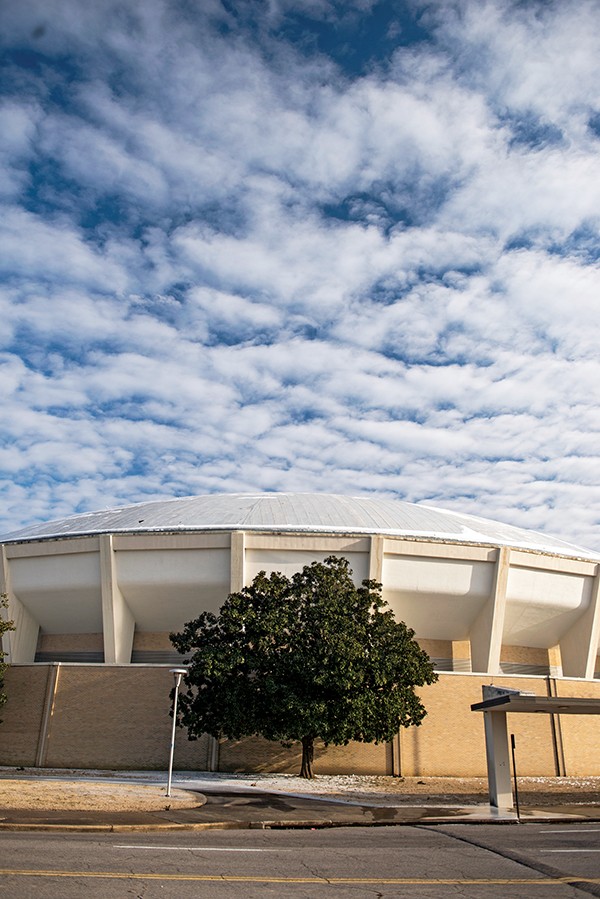New plans for the Mid-South Coliseum and the Memphis Fairgrounds are being drawn on what two community-led organizations believe is a blank slate for the shuttered building and largely vacant land in the center of Memphis.
When the Coliseum Coalition was created about a year ago, momentum to raze the building and build a huge youth sports complex on the 175-acre Fairgrounds site seemed unstoppable. Heavy equipment was set to roll on East Parkway as soon as Robert Lipscomb, then the city’s director of Housing and Community Development, got state approval for the site’s Tourism Development Zone (TDZ) status, the funding mechanism required to get started. The Coalition helped stall those plans with calls and events to get more community input on the project.
 Brandon Dill
Brandon Dill
Friends of the Fairgrounds will build a master plan for the Coliseum.
Lipscomb is now out of the picture, following an alleged rape scandal. His boss, former mayor A C Wharton, is out of office. And the TDZ funding idea is seemingly off the table.
Marvin Stockwell, a founding member of the Coalition, has now founded Friends of the Fairgrounds (FOTF) to bring Memphis voices together and plan its future with the same grassroots style as the Coalition. He said it is undoubtedly a “new day for the Fairgrounds.”
“It’s always felt like there’s an overarching plan that we could only hope to alter a bit,” Stockwell said. “Now, it feels like there’s a blank slate. What’s it going to be? What would be best for Memphis?”
Stockwell said he wants the FOTF to engage people from neighborhoods around the Fairgrounds and build a master plan “that the entire city can buy into, that is just for Memphians.”
Mike McCarthy, president of the Coalition, considers that last sentiment to be a core statement for his group and for the new push on plans for the Coliseum and the Fairgrounds.
“Whatever happens [at the Fairgrounds and the Coliseum], it’s for us. It’s not like Graceland, which is for them,” McCarthy said, referring to tourists as “them.”
As for next steps, Coalition treasurer Roy Barnes said if Mayor Jim Strickland approves the idea, a team of volunteer architects and engineers are prepared to make a preliminary assessment of the building, which was shuttered in 2006.
Next, the Coalition would form a business plan for the Coliseum to show, possibly, the cost of its renovation and its day-to-day operation. Then, the group would commission an economic impact study of an open, operating Coliseum.
What exactly would operate inside the building remains a question, Barnes said. But he and McCarthy hoped the venue could once again host concerts, many of which are now hosted in venues in North Mississippi.
They hoped the building could be active even without concerts as a home to museums for, perhaps, Memphis wrestling, rhythm and blues, and University of Memphis sports, and as a large community center.
McCarthy maintains that preserving the Coliseum is about building on existing Memphis culture for current and future generations, not “recycling” it in new buildings with no history. Barnes said the Coalition is still fighting the idea that the building’s preservation is tied up with nostalgia.
“It’s a beautiful building,” Barnes said. “More than that, it’s a viable building in the center of Memphis.”
Memphis historian Jimmy Ogle will lead a walking tour around the Fairgrounds and Coliseum this Sunday at 2 p.m.